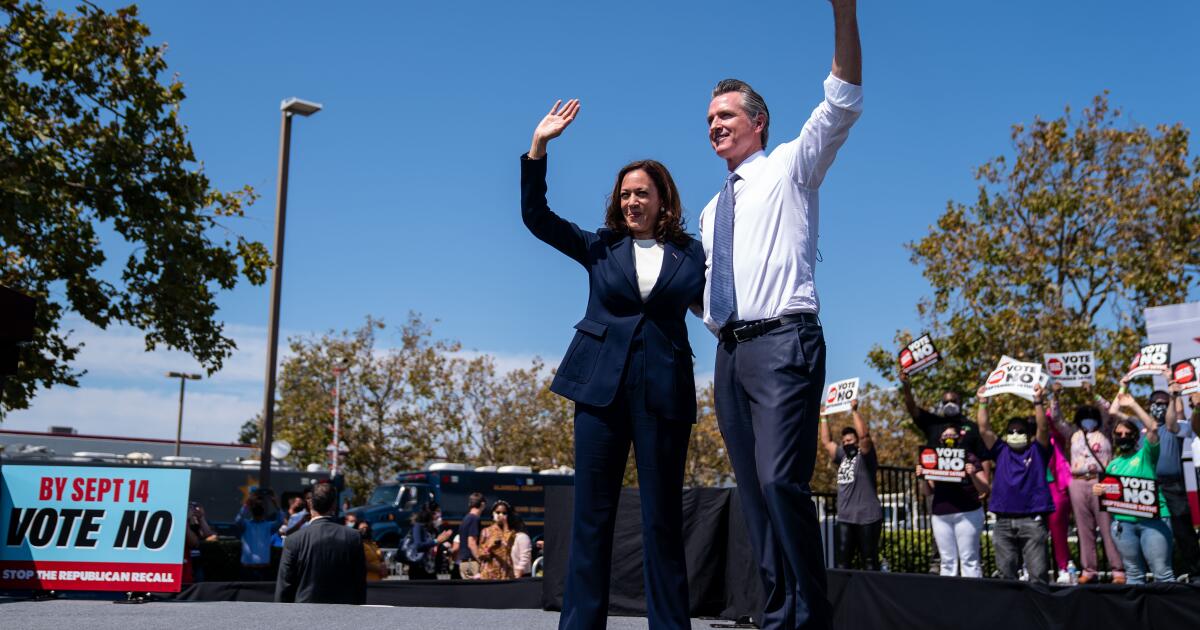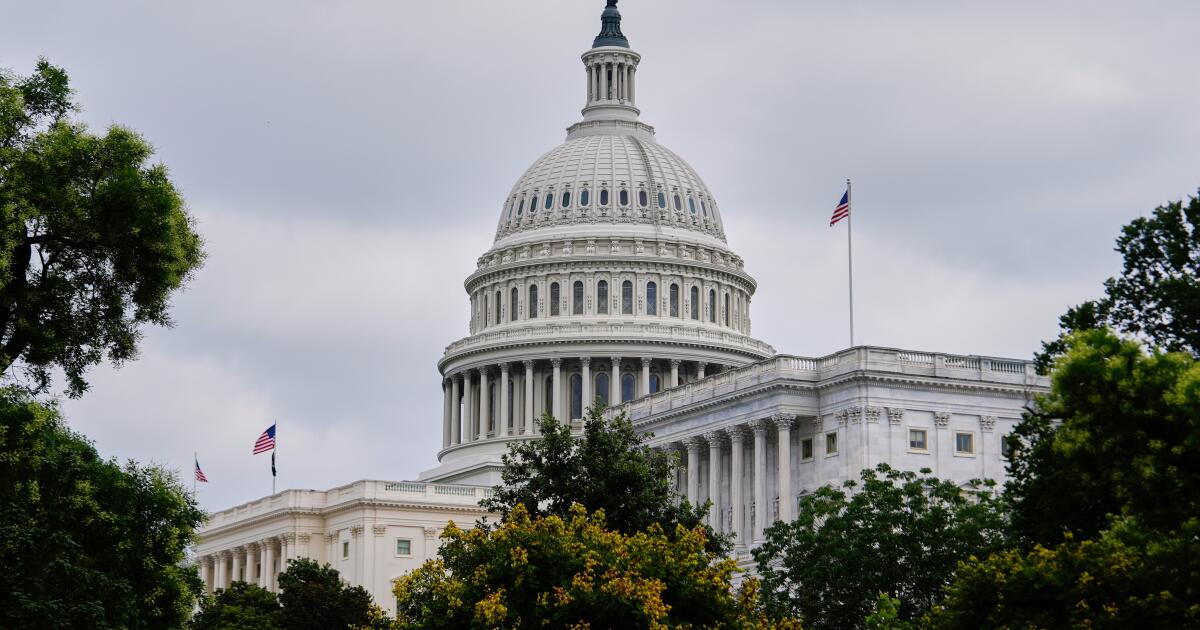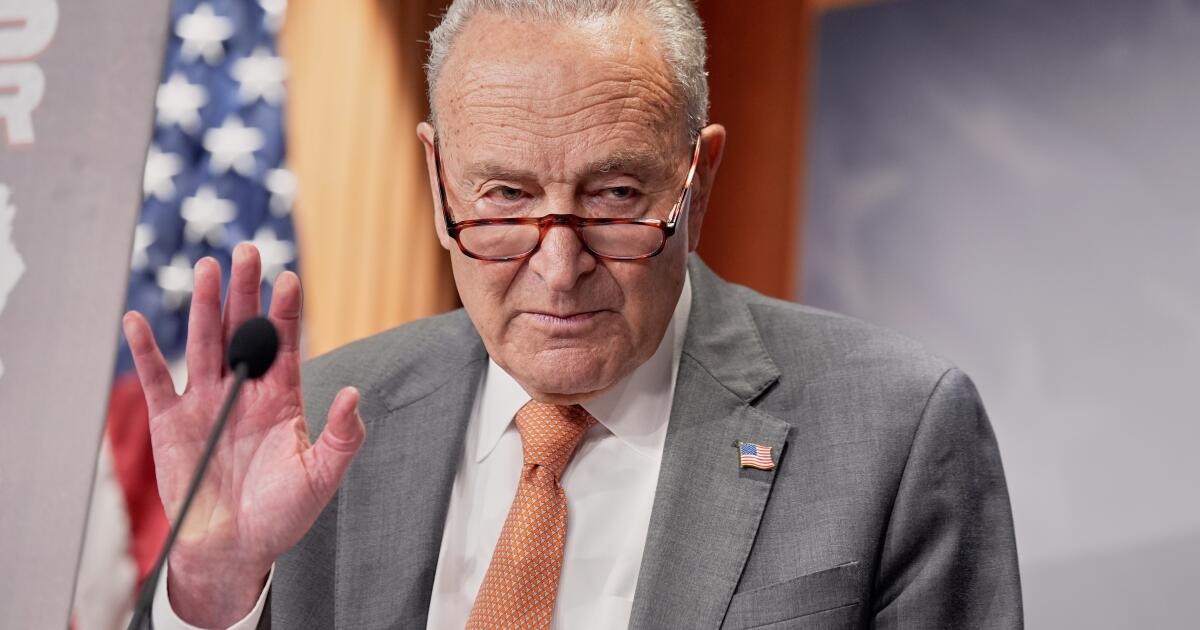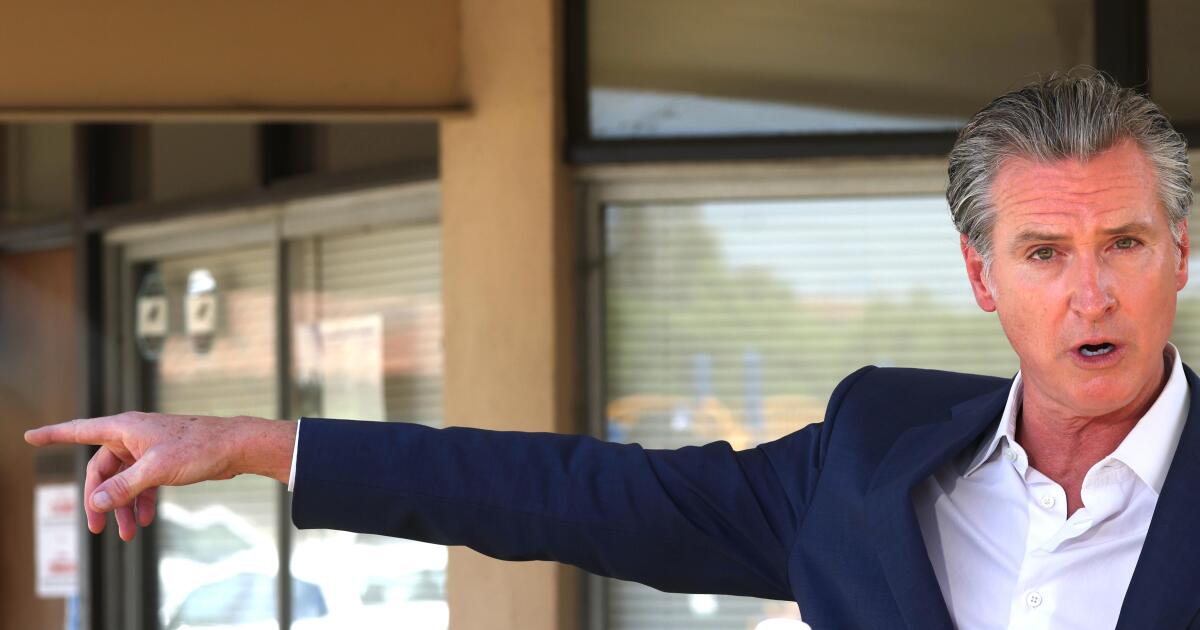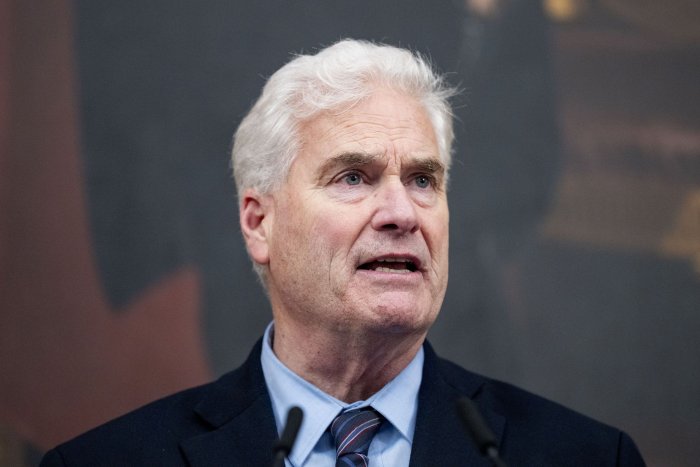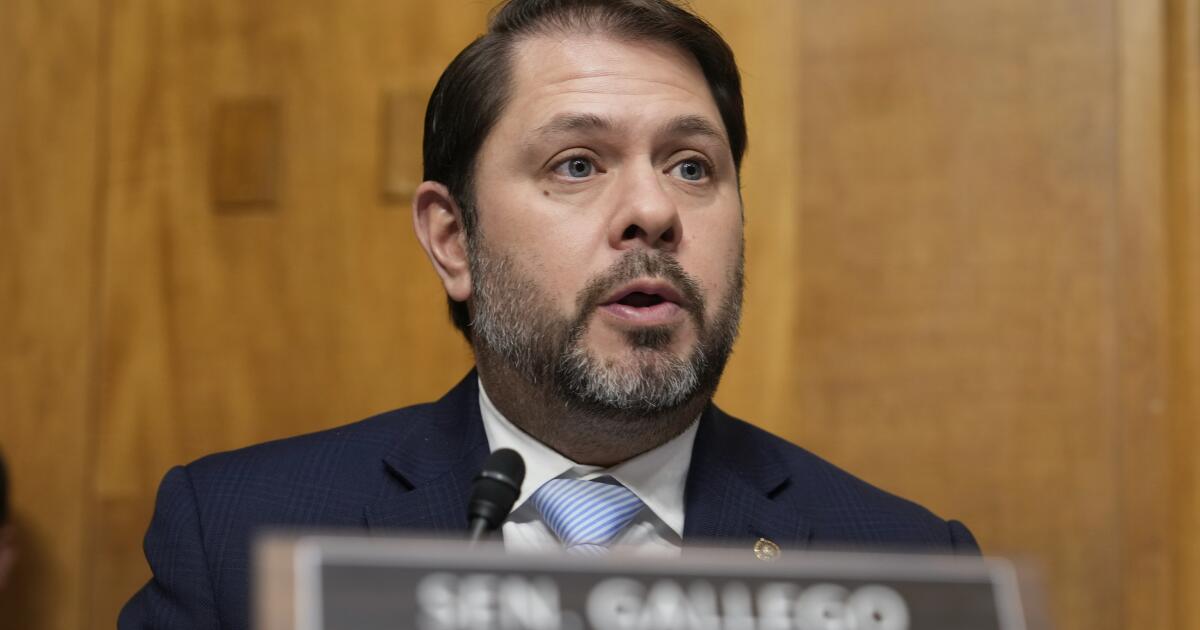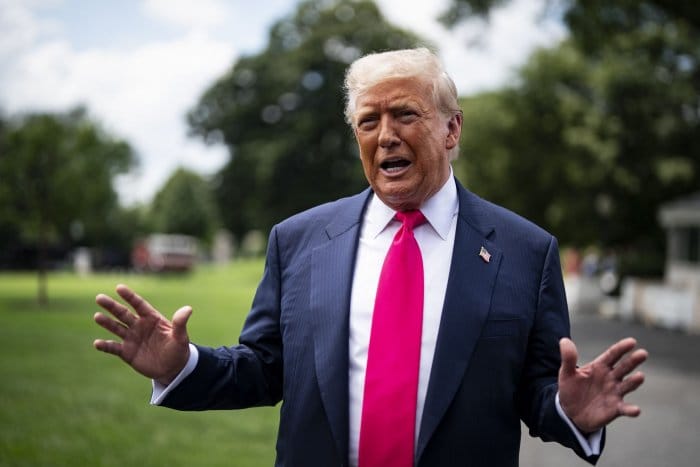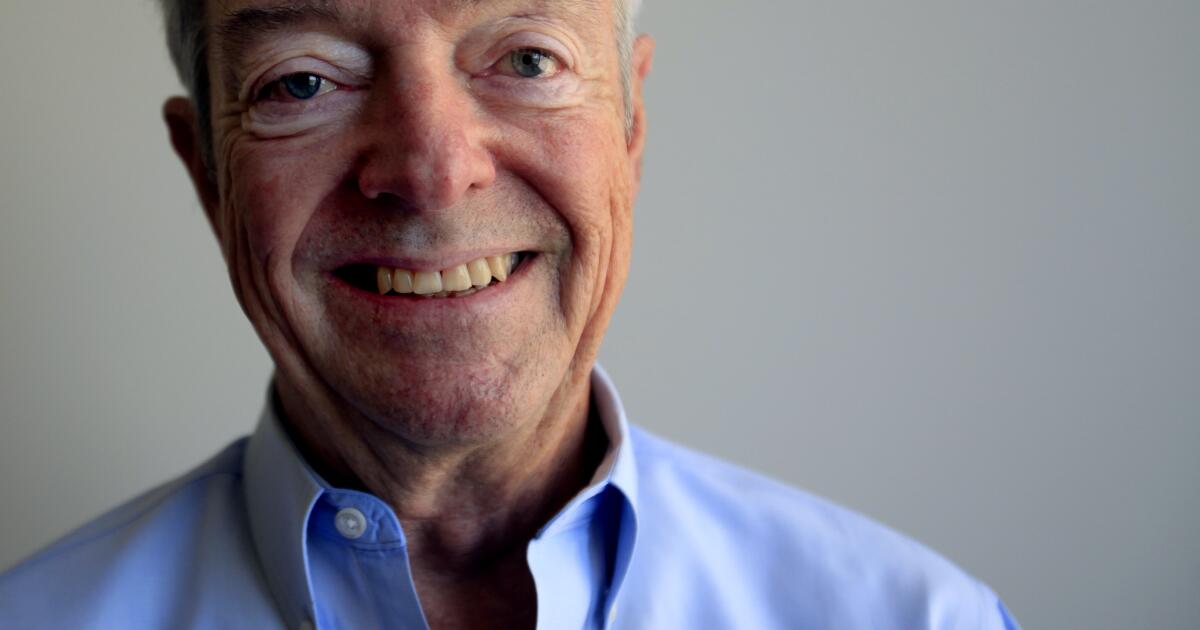As Harris drops out, a look at war chests in the Calif. governor race
Newsletter
You’re reading the L.A. Times Politics newsletter
George Skelton and Michael Wilner cover the insights, legislation, players and politics you need to know in 2024. In your inbox Monday and Thursday mornings.
You may occasionally receive promotional content from the Los Angeles Times.
SACRAMENTO — Former Vice President Kamala’s Harris’ decision to forgo a 2026 run for California governor came as a bit of a surprise, given her impressive winning streak in the state and comfortable lead in early polling. But that’s what makes campaigns so interesting, the unpredictability. It’s also why everyone should view nattering political punditry and campaign handicapping with a healthy heap of skepticism.
So keep that in mind now that the California governor’s race is wide open. The current field of candidates — yes, there’s still plenty of time for folks to jump in — is filled with gubernatorial hopefuls who have a legitimate if not outside chance of taking over for two-term Gov. Gavin Newsom, who is barred from running again.
Four of the top Democrats in the race already have won statewide races — former Atty. Gen. Xavier Becerra, Lt. Gov. Eleni Kounalakis, state Supt. of Public Instruction Tony Thurman and former Controller Betty Yee. One is the former mayor of California’s largest city, Antonio Villaraigosa of Los Angeles. Two were impactful lawmakers — Orange County Rep. Katie Porter and former state Sen. Toni Atkins. And, as always, there are the wild cards: wealthy Democratic businessman Stephen J. Cloobeck; and Republicans Chad Bianco, the Riverside County sheriff, and conservative commentator Steve Hilton.
Some of them have a better chance than others, of course, but all have enough political juice to stir up the race and at least influence the ultimate outcome.
This is Phil Willon, the L.A. Times California politics editor, filling in for columnist George Skelton this week. I’m joined by senior Sacramento reporter Taryn Luna to bring you up to speed on the latest.
The early money
On the same week Harris announced that she wasn’t running, just by coincidence, the latest campaign fundraising reports for the governor’s race were released to the public.
Those financial reports, which cover the first half of 2025, offered a glimpse of a candidate’s popularity and viability, since running a successful gubernatorial campaign in the most populous state in the union can cost tens of millions of dollars.
Campaign fundraising has been a bit frozen; donors were waiting to hear whether Harris was going to jump in the race, since she would have started as the clear favorite.
Plus, the fundraising totals don’t always tell the whole picture, as Times reporters Kevin Rector, Seema Mehta and Laura J. Nelson pointed out in their story on Sunday.
Kounalakis raised just over $100,000 during the first half of this year, a relatively paltry amount. But she had more than $4.6 million socked away and millions more in her lieutenant governor campaign account. Kounalakis’ father, the wealthy developer Angelo Tsakopoulos, also helped bankroll an independent expenditure committee supporting his daughter’s 2018 campaign for lieutenant governor.
Cloobeck, a Los Angeles Democrat, raised about $160,000 — but on Friday, he made a $10-million contribution to his campaign that he said “turbocharged” it.
Here’s a look at what the other candidates hauled in during the first half of the year and how much money they have in their accounts, since they were busy spending money as well:
- Atkins reported having $4.3 million in the campaign, while raising $648,000.
- Villaraigosa raised $1.1 million. He reported $3.3 million cash on hand based on fundraising he did last year.
- Becerra had $2.1 million in the bank after raising $2.5 million.
- Porter reported raising $3 million since announcing she was running for governor in March. She said she had $2 million in the bank.
- Bianco reported raising $1.6 million, and had $1 million in the bank.
- Hilton raised about $1.5 million, of which $200,000 was a personal loan. Hilton has a little less than $800,000 in the bank.
- Yee raised almost $238,000 and had $637,000 on hand.
- Thurmond raised about $70,000, and had almost $560,000 on hand.
Although a few seemingly have a pile of money and others look like they are barely scraping by, the reality is that none of them has enough money to wage a successful campaign for governor at this point. So, how much they rake in in the months ahead will be pivotal.
Harris’ next act
Speculation about Harris’ plans for the future is focused heavily on whether she will run for president again in 2028, talk that started almost immediately after the former vice president announced that she wasn’t running for California governor. Harris indicated that she’d remain active in national politics, but just how remains the big question.
The Times’ story on what Harris might do next explained what might be a motivating influence for Harris:
Experts in power and political leadership expect Harris’ next move to be something in the public eye, given she is relatively young at 60 and no doubt wants her last chapter in the spotlight to be something other than her humbling loss to Trump in the 2024 presidential election.
“Even if it isn’t the governorship of California, the idea of wanting something else other than the 2024 election to be the last thing Kamala Harris ever did would be very appealing,” said Gregory H. Winger, an assistant professor of public and international affairs at the University of Cincinnati who has studied former presidents’ lingering influence.
Winger said his research showed those “most active in trying to be influential” in their post-White House years were those whose time in office ended on a sour note, such as failing to win reelection.
“It’s kind of a frustrated ambition that then leads into higher activity,” Winger said — and Harris has that.
Harris was careful to leave her options open — framing her hopes for the future around ideals such as “fighting for the American people.”
The Democratic Party is losing support from young men
One of the many takeaways from the 2024 presidential election, including Harris’ defeat to Trump, is that Democrats are losing men — and young men feel particularly unseen by the party.
In his ongoing dissection of how Trump prevailed, Newsom brought Richard Reeves, a social scientist and author, onto his podcast this week and asked what he thought about efforts to speak to male voters.
“The way I think about this is that in politics something almost always beats nothing,” said Reeves, founding president of the American Institute for Boys and Men. “And what there was from the Democrats on issues around boys and men was nothing.”
For a Democratic governor of California weighing a potential 2028 presidential run, there are plenty of political reasons for Newsom to strive to understand why men feel disconnected from his party. Kamala Harris won 55% of women and 42% of men, a 9-point increase in the gender gap compared to the 2020 presidential election.
But Newsom also has personal reasons to ponder, too. The governor has talked about his own 14-year-old son, Hunter, and his interest in MAGA podcasters and influencers, such as Charlie Kirk.
Reeves said Democrats lost support from men in the election because they made a conscious choice to appear as the party that supports women — at the exclusion of men.
“I think that was a fatal miscalculation,” Reeves said. “I also think, honestly, it was somewhat insulting to women because there are plenty of women out there, and we may know some in our own lives, governor, who are simultaneously worried about the issues facing women. Access, for example, to reproductive healthcare, justice at work. And they’re desperately worried about their son’s mental health, and they’re very worried about their brother’s job.”
Trump made a stronger effort to win over a micro-generation of young men “who grew up with terms like toxic masculinity and mansplaining and the women’s movement,” Reeves said.
“The Republicans managed to convince young men, ‘We see you and we like you,’ and I don’t think there’s anything more to it than that, but I don’t think the Democrats did a very good job of making young men feel the same way,” Reeves said. “If anything, Democrats struggle with the idea that men might have problems because too many of them are still convinced that men are the problem.”
Men’s issues are a topic Reeves writes and speaks about often. Compared to women, men suffer from higher suicide rates and a greater sense of disconnection from peers. Men are less likely to attend college and more prone to violence.
Reeves casts the problem as the refusal to address the reality that men are struggling, too.
Ignoring men’s issues creates a gulf that the “reactionary online right” fills, he said, and draws young men to controversial figures such as Andrew Tate, a British influencer who promotes misogyny.
When the podcast with Reeves aired on Wednesday, Newsom announced an executive order that directs various state agencies to make recommendations to address suicide among young men, to improve recruitment of male teachers and counselors, and to increase male participation in state-funded volunteer programs, job training, educational partnerships and behavioral health initiatives.
Newsom said the work of Reeves and others “really is a call to arms.”
What else you should be reading
The must-read: In America’s hardest-fought congressional district, voters agree: Release the Epstein files
The TK: Newsom provides new details about his plan for a redistricting fight with Trump
The L.A. Times special: Feds move to drop charges in controversial cases as Trump re-ups L.A. prosecutor
—
Was this newsletter forwarded to you? Sign up here to get it in your inbox.
